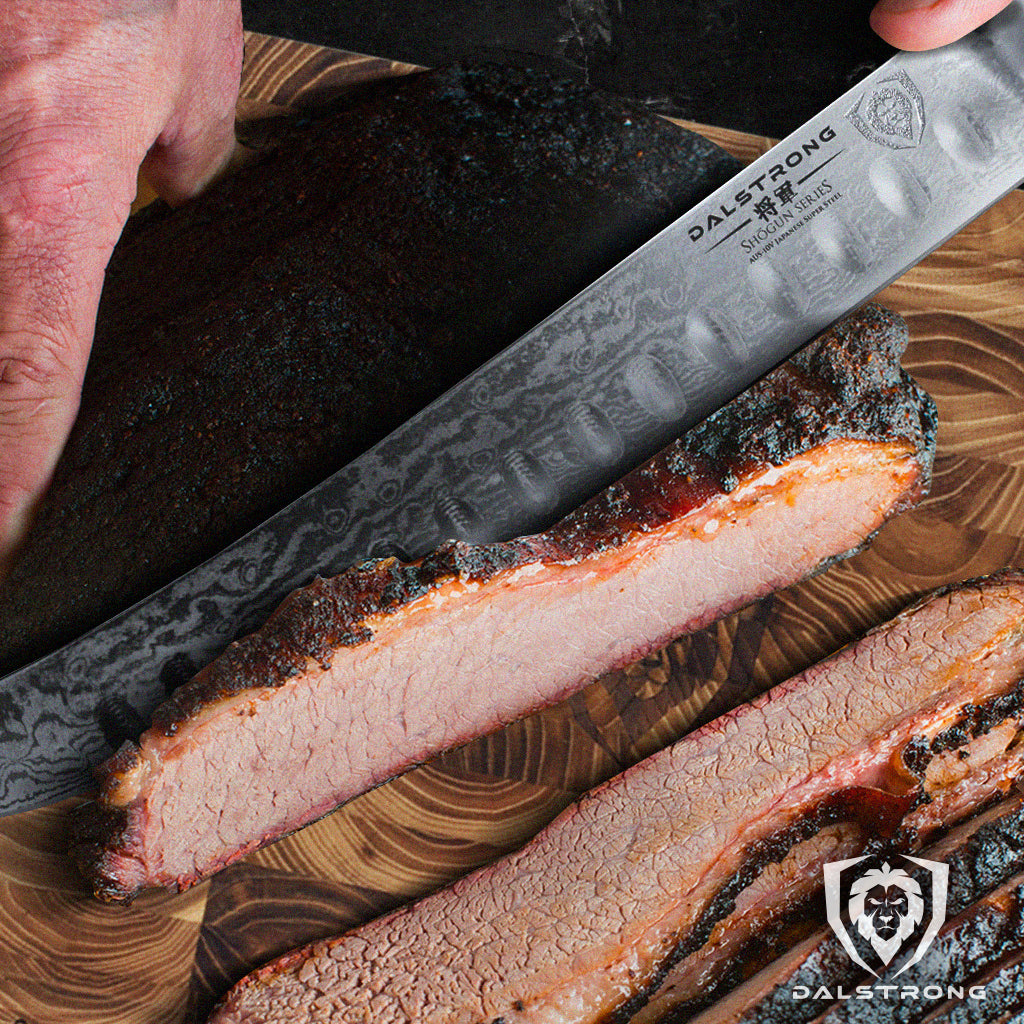A semi-flexible boning knife is better for deboning heavier bones, while a flexible boning knife is ideal for thinner meats and smaller bones. When it comes to cutting brisket, a curved blade is great for removing larger bones, while a straight blade is better for precise cutting on smaller cuts.
Boning knives are designed to remove meat from bones, cut through connective tissue, and separate meat from fat or joints. The slightly flexible blade allows maneuverability in small spaces, but it is thicker and sturdier than a fillet knife.
Understanding The Differences
A flexible boning knife is perfect for thinner meats and smaller bones, offering more dexterity and maneuverability. It’s ideal for delicate cuts and precise slicing. On the other hand, a semi stiff boning knife is suitable for deboning larger cuts of meat.
It can follow along heavier bones without cutting into them, providing better control and precision for trimming. Both types of knives have their advantages and are used for different purposes in the kitchen. Whether you need to handle thinner meats or tackle larger cuts, understanding the differences between a flexible and semi stiff boning knife will help you choose the right tool for the job.
So, next time you’re working with meat, consider the specific requirements of your dish and pick the appropriate knife accordingly.

Credit: dalstrong.com
Choosing The Right Knife For Brisket
When it comes to choosing the right knife for brisket, it’s important to consider the type of blade. A semi-stiff or semi-flexible boning knife is ideal for deboning, as it can easily maneuver around heavier bones without cutting into them.
On the other hand, a flexible boning knife is perfect for thinner meats and proteins with smaller bones, where more dexterity is needed. If you’re looking for a specific recommendation, the Victorinox Slicing Knife with Granton Blade is a popular choice, offering precision and versatility.
Alternatively, the Hamilton Beach Electric Knife provides convenience and ease of use. Ultimately, whether you prefer a curved or straight blade depends on your personal preference and the specific cutting tasks involved. A curved blade is great for removing bones from larger cuts of meat, while a straight blade excels in precise cutting and smaller cuts.
Exploring The Uses Of Flexible Boning Knives
A flexible boning knife is an essential tool for various meat preparations. Its primary function is to remove meat from bones, making it perfect for deboning tasks. With its flexibility, the knife can easily cut through connective tissue and ligaments without tearing or damaging the meat.
It is also useful for separating meat from fat or joints, ensuring clean and precise cuts. The advantage of choosing a flexible boning knife lies in its maneuverability in small spaces. Its slightly thicker and sturdier blade compared to a fillet knife allows for better control and stability.
Whether you’re working with thinner meats or proteins with smaller bones, a flexible boning knife offers the dexterity needed to handle these tasks effectively.
Understanding The Differences: Semi Stiff Vs Flexible
A semi-stiff boning knife offers precision and control but may not be suitable for delicate cuts. It is ideal for specific trimming tasks that require more rigidity. On the other hand, a flexible boning knife provides dexterity and maneuverability, making it perfect for intricate cuts and thin meats.
However, it may offer less control when dealing with heavier bones. When choosing between the two, consider the type of meat and bone you will be working with. Match the knife to the task at hand and consider your personal preference and comfort.
By taking these factors into account, you can determine whether a semi-stiff or flexible boning knife is the right choice for your needs.
Frequently Asked Questions
Is A Flexible Or Semi Flexible Boning Knife Better?
A semi-flexible boning knife is better for deboning heavier bones without cutting into them, while a flexible boning knife is great for thinner meats and smaller bones, where more dexterity is needed.
What Is The Best Type Of Knife To Cut Brisket?
The best type of knife to cut brisket is a semi-flexible or flexible boning knife. A semi-flexible blade is ideal for deboning and following along heavier bones without cutting into them. A flexible boning knife is great for thinner meats and proteins with smaller bones, providing more dexterity.
Is A Curved Or Straight Boning Knife Better For Brisket?
A semi-flexible blade is better for deboning because it can follow heavier bones without cutting into them. A curved blade is great for removing bones from larger cuts like brisket, while a straight blade is better for precise cutting and smaller cuts.
Why Use A Flexible Boning Knife?
A flexible boning knife allows for precise meat removal from bones and maneuvering in small spaces.
Are Flexible Or Semi-Flexible Boning Knives Better For Deboning?
A semi-flexible blade is ideal for deboning because the knife can follow along heavier bones without cutting into them.
Which Type Of Knife Is Best For Cutting Brisket?
The best type of knife to cut brisket is a slicing knife with a Granton blade, like the Victorinox Slicing Knife.
Is A Curved Or Straight Boning Knife Better For Brisket?
A curved blade is great for removing bones from larger cuts of meat like brisket, while a straight blade is better for precise cutting.
Why Should I Use A Flexible Boning Knife?
A flexible boning knife is designed for removing meat from bones, cutting through connective tissue, and maneuvering in small spaces.
What Is The Difference Between Semi-Stiff And Flexible Boning Knives?
A semi-stiff boning knife offers more precision, while a flexible one is great for filleting fish or maneuvering around bones.
Which Boning Knife Is Better For Trimming Brisket?
A curved boning knife is ideal for trimming brisket, ribs, and other larger cuts of meat.
Conclusion
When it comes to choosing between a flexible and semi-stiff boning knife for brisket, the decision largely depends on the specific task at hand. A semi-stiff blade offers precision and control, making it the ideal tool for deboning larger cuts of meat.
It allows you to follow along heavier bones without cutting into them. On the other hand, a flexible boning knife shines when dealing with thinner meats and proteins that have smaller bones. Its dexterity and maneuverability come in handy for navigating tight spaces and separating meat from fat or joints.
Ultimately, the choice between the two types of knives comes down to personal preference and the specific requirements of the task. Both options have their strengths and can be valuable additions to any kitchen or butcher’s toolkit. So, whether you favor the precision of a semi-stiff blade or the dexterity of a flexible one, having the right boning knife can make all the difference when it comes to brisket preparation.

This is Kristina, a passionate content writer, copywriter, and bookworm. Always dedicated to providing informative and accurate product reviews for enjoyable shopping. In my free time, I love spending time in nature and with animals and doing yoga.

